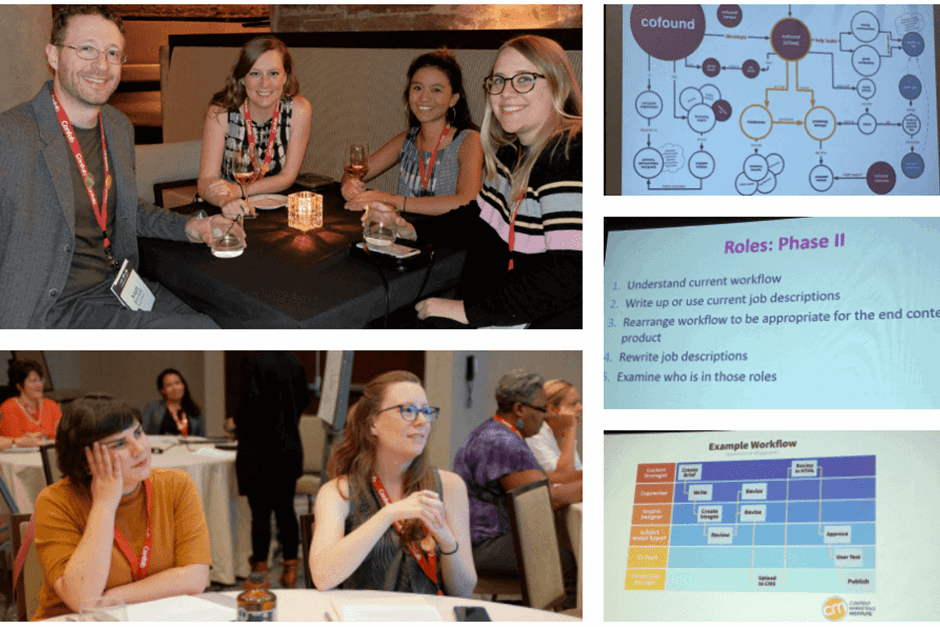Four takeaways from Confab Intensive 2017: It’s all about your frameworks
27 September 2017
In mid-September, content strategy practitioners far and wide convened for Confab Intensive 2017, an annual content strategy conference with a workshop-only format. Metia’s content strategist Kate Pluth was among them, and she brings back her key takeaways.
Overall, the workshops I attended at this conference reinforced the importance of overarching frameworks when creating content. You wouldn’t ask an orchestra to perform without giving them all the same sheet music. The same is true for content creation: We need to be enabling the people involved in creating digital content for them to make a successful end product. Frameworks offer that support to content programs by documenting shared goals, principles, and processes.

- A content ecosystem map can help you and your team capture what’s really going on with your content. It achieves this through visualizing the relationships between roles, channels, processes, and tools. It’s relatively common to have some lists of these components or an inventory of content, but mapping them together synthesizes everything, bringing more clarity and offering a tool for evaluation. How are we using our different channels? How does our content get to our customers? Who has influence over our content? And, is this the way we want it to be? You can examine these questions with content ecosystem maps.
- When working on content governance frameworks, focus on roles, not people. Requestor, writer, editor, reviewer—functional roles like these allow you to assign ownership more objectively and to make sure that the right people are filling the right roles. We also know that people can move or change, so the framework should be able to withstand personnel changes. Once the roles are set, you can assign people to them. Use these main questions to guide you and your team: What do people like to do and not like to do? What are they good at and not good at? Are there gaps in talent where someone new should fill in?
- A measurement framework can help take stock of your content’s effectiveness. The first step is connecting business goals to the content that’s produced: what’s a business KPI that you can solve with content? What content are you producing or will you produce to address it? Then, think about the ways in which you can track behavior associated with the content. The methods fall into three main buckets: analytics, heuristics, and user testing. Documenting this information can focus your content efforts, clarifying the purpose of the content and looking at the right metrics when it’s time to analyze.
- Use structured content to enable more consistent content and lay the foundation for personalization. The aim of structured content is to establish meaningful elements for your content types and move away from building an entire web page or piece of content in the “body” field. The power of structured content is twofold: One, it brings consistency and reduces the risk of human error. For example, writers and editors know how long sections of copy should be and what each section needs to achieve. Two, it unlocks the potential for automation and personalization. Once content has a meaningful structure, you can think about how algorithms might be able to dynamically pull some of those elements for you or serve them up differently in different places. Think about event listings that auto-expire after the event date passes, recommended videos based on ones you’ve watched before, and recipes that can change ingredient measurements based on the number of servings you select—these are all features that happen because of structured content.
Are you creating content but want to document or think through your approach? Wondering if your frameworks for content creation could better support your goals? If any of these takeaways sound like something you could use some help with, Metia is happy to facilitate the process. Contact us.
Big thanks to conference speakers Scott Kubie (content ecosystems), Ahava Leibtag (content governance), Meghan Casey and Bill Siemers (content effectiveness), and Laura Creekmore (structured content) for sharing their expertise, which formed the basis for these takeaways.

